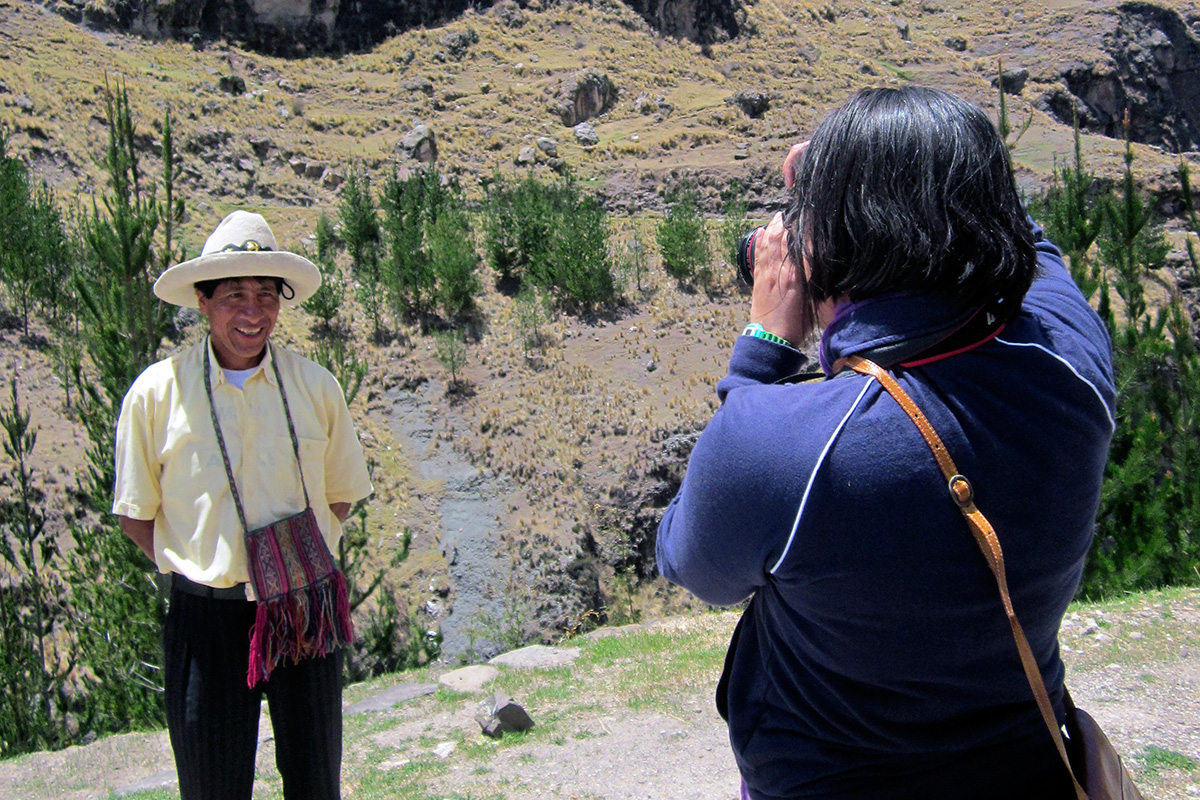The old gifting and trade routes that became the Inca road both connect and symbolize the unique interdependence and distinctiveness of communities that live today in the Andean hills and valleys, in the rain forest, and on the coast. Anthropologist John Murra did ground-breaking research on their sophisticated practices for managing the natural and cultural resources of different altitudes in what he termed a “vertical archipelago.” Some of these communities and families may live in two or three environments all within walking distance.
In August, a Smithsonian Center for Folklife and Cultural Heritage curatorial team met with a Peruvian team of historians, anthropologists, educators, reporters, cultural organizers, and representatives from the ministries of tourism and culture to brainstorm how to present Peru at the Smithsonian Folklife Festival in 2015. How could we capture the cultural dynamics of this vertical archipelago? What is the message; what are the main themes; and what are the issues, topics, and types of presentations associated with the message and themes?
Diversity is usually the first concept to rise up in every brainstorming session. The recognition and appreciation of diversity is at the core of the Center’s mission and is based on the counter-hegemonic respect for traditional cultures. Another common term in Latin America is “pluriculturality,” which implies mutual conviviality and respect among diverse cultural groups. In our discussions, diversity rose to the top of the list but presented a dilemma: how could we present a distinctive Peru with all of its cultural diversity that would be different, for example, from Mexico or Colombia? Historian Jorge Ortiz suggested that we note how Peru’s cultural diversity creates difference. A clue may be in the distinctive and multiple environments and the cultural adaptation to the different ecological niches.
Associated with diversity is connectivity, which led to a discussion of the Inca road as a system of organization, described by Ortiz as a “political project for creating collectivity.” The Festival program will complement an exhibition on the Qhapaq Ñan (Inca road) at the National Museum of the American Indian, but in our brainstorming sessions we agreed that it would focus on contemporary traditions instead of Incan monuments.
Peru is a country steeped in millennial traditions, but we are exploring how today’s traditions are deeply contemporary. Our challenge is to capture and present the creative tensions between tradition and modernity and the threads of connectivity between the different environments and communities. The Qhapaq Ñan will help us map out some of our sites for research, but more importantly it will serve us as metaphor to symbolize communication and interchange, connection, memory, intersection, and interpretation, and provide the curatorial team a strategy for exploring the vitality and creativity of the traditional communities that comprise contemporary Peru.
Our brainstorming sessions helped us identify main themes and through-lines leading to sustainability. Other hilos conductores (“connecting threads”) were more genre-oriented: beliefs, foodways, fiestas, design, textiles, hats, and on and on. These are the connective yet distinctive elements we will explore in the fieldwork research.
Together with our Peruvian partners, we have identified over fourteen possible case studies for our fieldworkers to explore. Guided by this initial framework, the stories will be fleshed out, and we then we can begin to identify participants for the Festival. The conceptual framework will also help us design the site and develop performances, discussion sessions, workshops, and more.
But when the participants arrive in Washington, D.C., and make the National Mall their home for ten days, they will be their own cultural interpreters, demonstrating their roles in systems of connectivity that exist back home and, most likely, that emerge at the Festival.
Olivia Cadaval has curated numerous Folklife Festival programs, including Las Américas: Un Mundo Musical (2009), México (2010), Colombia: The Nature of Culture (2011), and Citified: Arts and Creativity East of the Anacostia River (2012). She is currently co-curator of the 2015 program on Peru.


